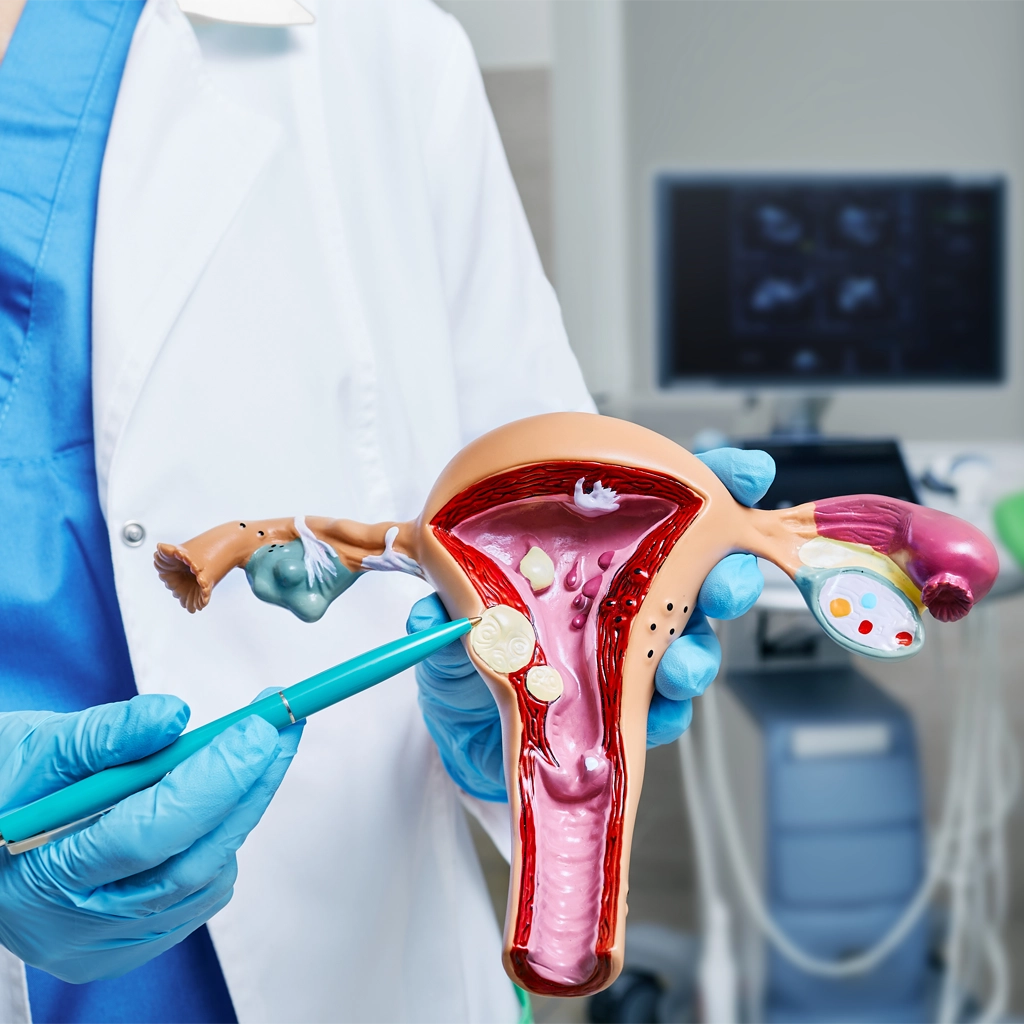What are uterine fibroids?
Fibroids are benign (non-cancerous) tumors the grow in or around the uterus. They range widely in size and are most common in women 30-40 years of age. Women of any ethnicity can have them, but African American women are at the greatest risk for developing them. When symptoms become severe and they cannot be managed with medication and lifestyle modification, a procedure called uterine fibroid embolization (UFE) is an excellent, minimally invasive alternative to surgery like hysterectomy and myomectomy.
During the UFE procedure, an interventional radiologist uses imaging to guide a catheter through the body to the uterine artery, and then to the smaller blood vessels feeding the fibroids. Tiny microspheres are injected into the vessels, which become lodged and block the flow of blood to the fibroid. This causes it to shrink over time and symptoms are relieved.
Preparation for Uterine Fibroid Embolization
You will be given specific instructions by your interventional radiologist when preparing for a minimally invasive uterine fibroid embolization procedure.
Procedure Time
The length of the UFE is about an hour and you will be able to return home the same day after a short period of observation following your procedure.
